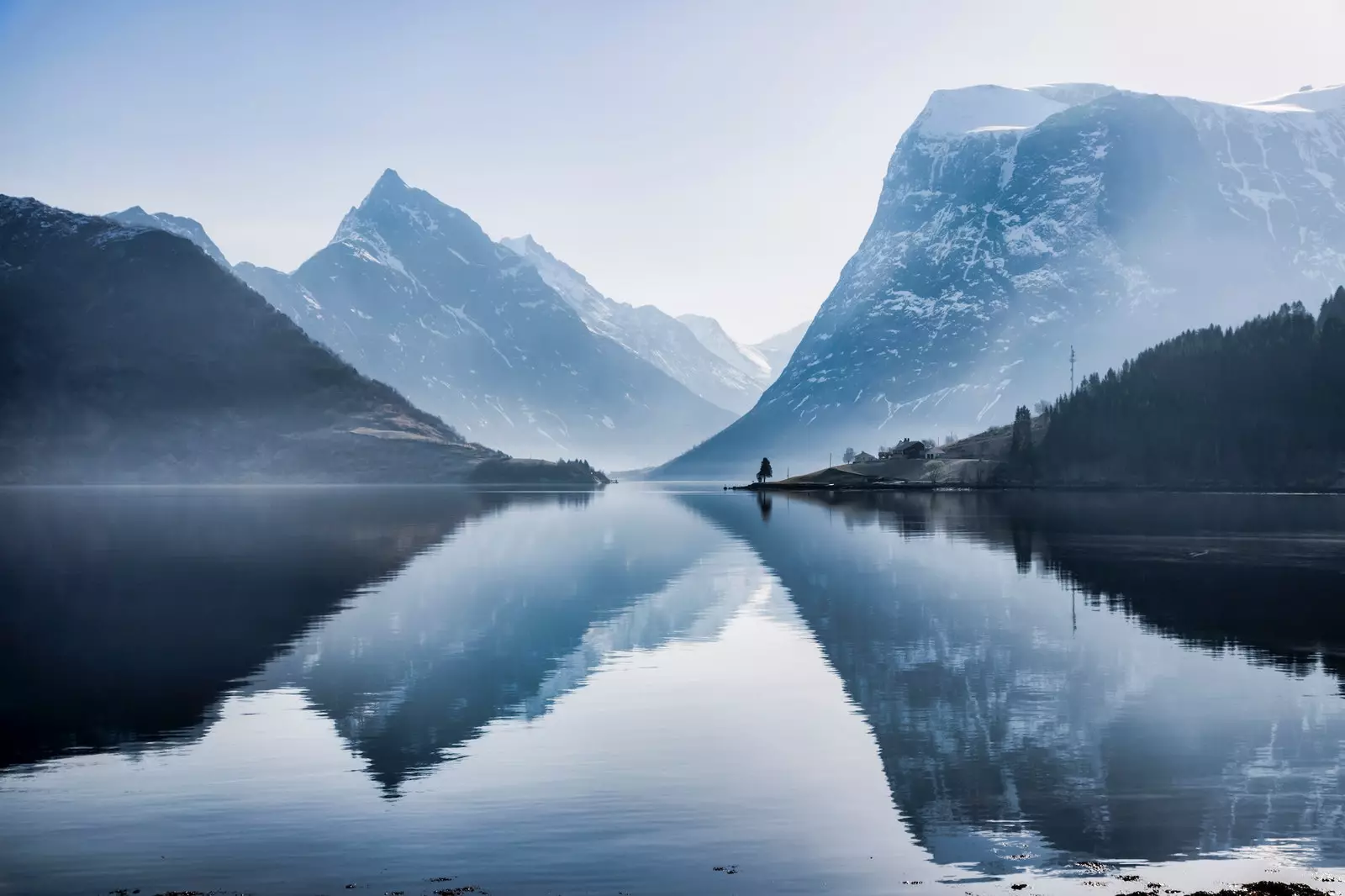
The fjords of the Norwegian archipelago of Sunnmøre.
On a small island off the western coast of Norway, no land between her and Iceland, lives an artist whose semi-abstract and melancholic oil paintings are inspired by the surrounding ground and sky. Sometimes literally. His name is Ørnulf Opdahl and the island's name is Godøy. Sometimes Ørnulf walks a few meters to the beach and collects handfuls of sand to give texture to the painting. Opdahl's house is the landscape of Norway in miniature. There's a lake and a mountain and a red-striped lighthouse which appears to act as a conduit for the Northern Lights. All around is ocean.
for an artist, it would be almost insane not to be influenced by the elements presents.
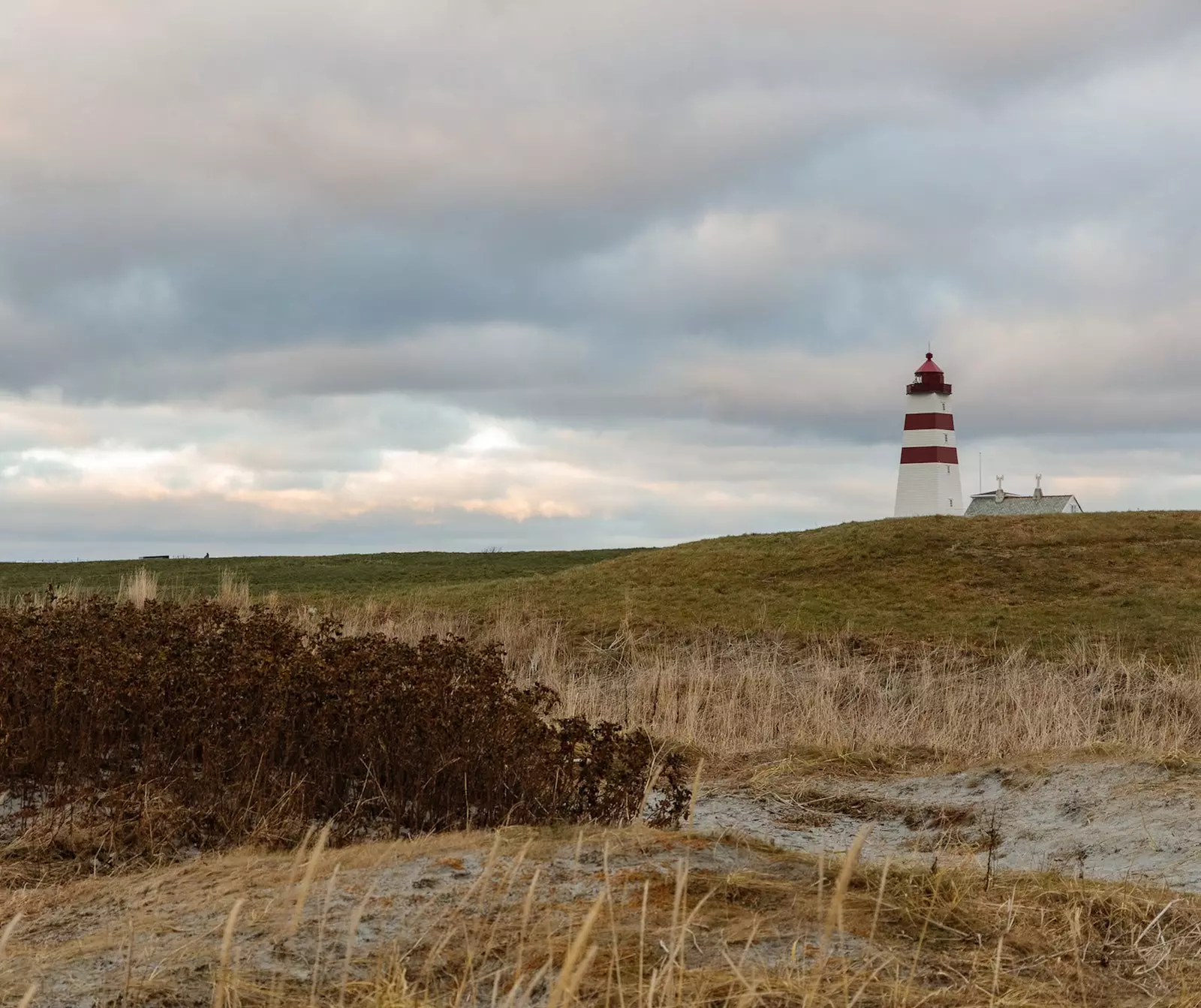
The Alnes lighthouse on the Norwegian island of Godøy.
Godøy Island is part of Sunnmøre, an archipelago that stretches along the northwestern coast of the country and one of the starkest regions in the world, marked by glaciers and shaded by intense vegetation . These islands jut out into the Norwegian Sea, some linked by underwater tunnels, though there are far more routes for boats than cars. Sublime and magnetic, the dark Alps of Sunnmøre have attracted climbers since the 19th century. Lonely places abound, baptized with names that could have been blown away by the wind. Stormornet. Aksla. Skårasalen. Since ever life follows the rhythm of the seasons, entangled in sheep's wool and dotted with fish scales. The only city in the area, Ålesund, is actually a dilapidated fishing village, one raised with an Art Nouveau rainbow of sherbet hues, chiseled stone in turrets and spiers, and watercolors of kindness against so much wild nature.
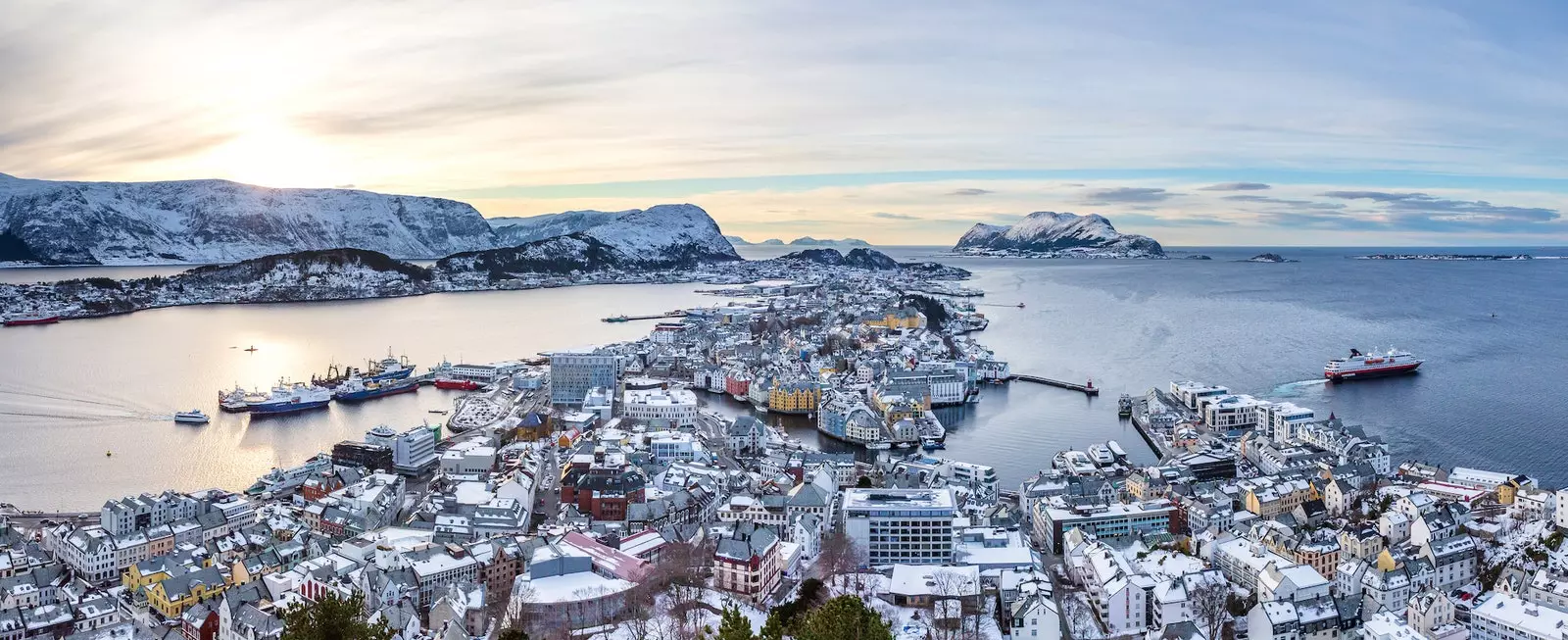
Ålesund, the only "city" in the Sunnmøre archipelago, in winter.
“This is quite different from anywhere else in Norway, which can often be more of the same,” says Vebjørn Andresen, who was born a little further north in Tromsø and came to Sunnmøre from the vast polar reaches of Svalbard. “But here the landscape is so compact. And it can change minute by minute. The first time I drove through the Norangsdalen valley, I was so surprised by the surroundings that I had to stop and sit on the grass." Last summer he got a boat and spent the weekends paddling the fjord. He and his boat, often the only figure in the landscape. Dwarfed by the peaks he wondered how the little red-roofed farms clinging to the cliffs would have been built. Paddling between channels and steep fjords that cut the sea, he felt like Jonah entering the belly of the whale.
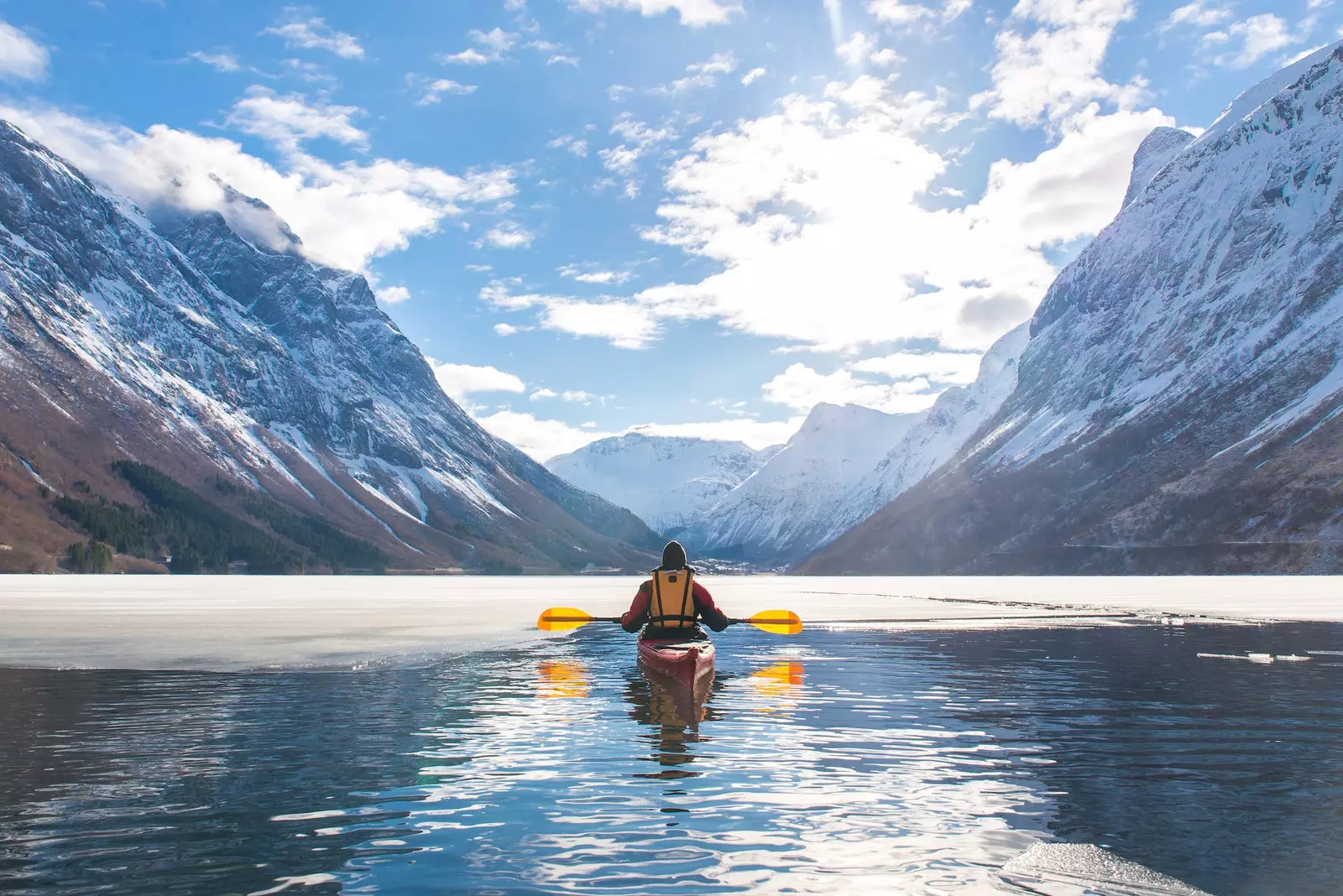
Paddling in the Geiranger Fjord one feels so big and so tiny.
The reason Andresen came to this part of Norway was to take over as CEO at 62˚ Nord, the experiential hotel and travel company founded by Knut Flakk and family. The history of 62˚ Nord goes back to Norway's oldest knitwear manufacturer, Devold, which Flakk's father acquired in the 1980s. Devold is also a family business, founded in 1853 by a forward-thinking entrepreneur who installed electric lighting in his factory just four years after it was invented. Workers wove wool from nearby farms into long johns and thermals. When the Victorian explorer Fridtjof Nansen crossed Greenland on cross-country skis, he wore Devold underwear; also Roald Amundsen when he reached the North Pole. and the actor Kristofer Hivju, better known as Tormund Giantsbane from Game of Thrones and a regular visitor to Ålesund, he insisted that the entire cast of the series wear them during filming in sub-zero Iceland.
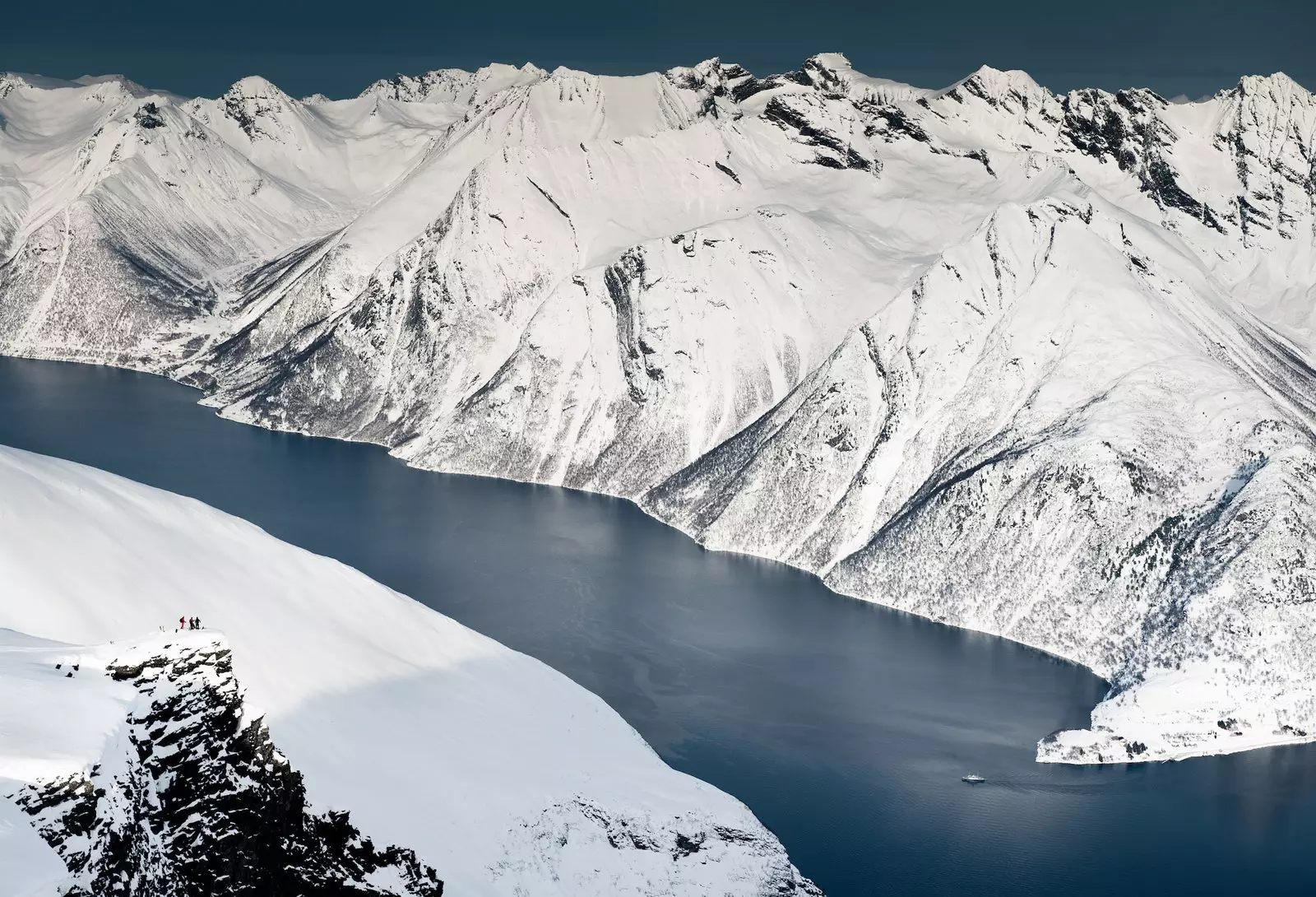
Geiranger Fjord in the Sunnmøre Archipelago in winter.
In 2003, when Flakk was seen forced to move its manufacturing to Lithuania to survive in the global marketplace, it faced a great challenge: prevent this from ending up impoverishing the region.
After all, Devold had helped save local communities at a time when many were buying one-way tickets to the United States. So he decided to see the moment as an opportunity. “I was looking for a way to create jobs and I realized that here there was no offer of high-end travel experiences. Quite curious, considering the wealth of the country and the natural beauty around Ålesund," remember Knut Flakk.
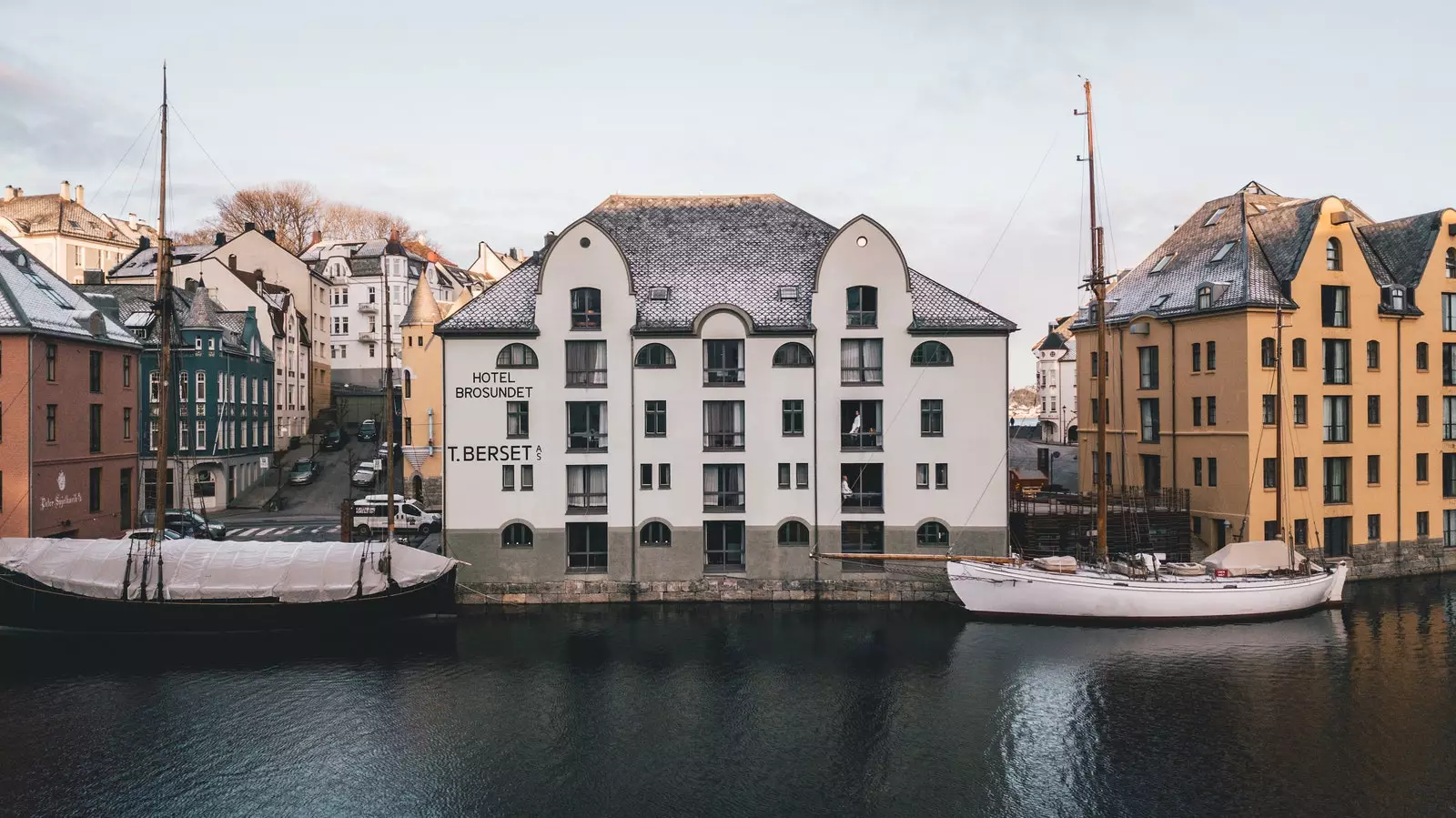
Hotel Brosundet in Ålesund occupies a former fishing warehouse reclaimed by renowned architecture firm Snøhetta.
The group 62˚ Nord, which Flakk founded with his wife Line, adopts a sustainable approach that is organically intertwined with the life of the region. The first of his three hotels, the Hotel Brosundet, is located in the center of Ålesund, so close to the water that guests have been known to jump from windows into the sea. occupies a old fishing warehouse that was reinvented by Snøhetta, the famous architecture firm that designed the Oslo Opera House and the National 9/11 Memorial Pavilion and Museum in New York. Room 47 of the Brosundet is located in a small lighthouse at the end of a pier, a few steps from the main building.
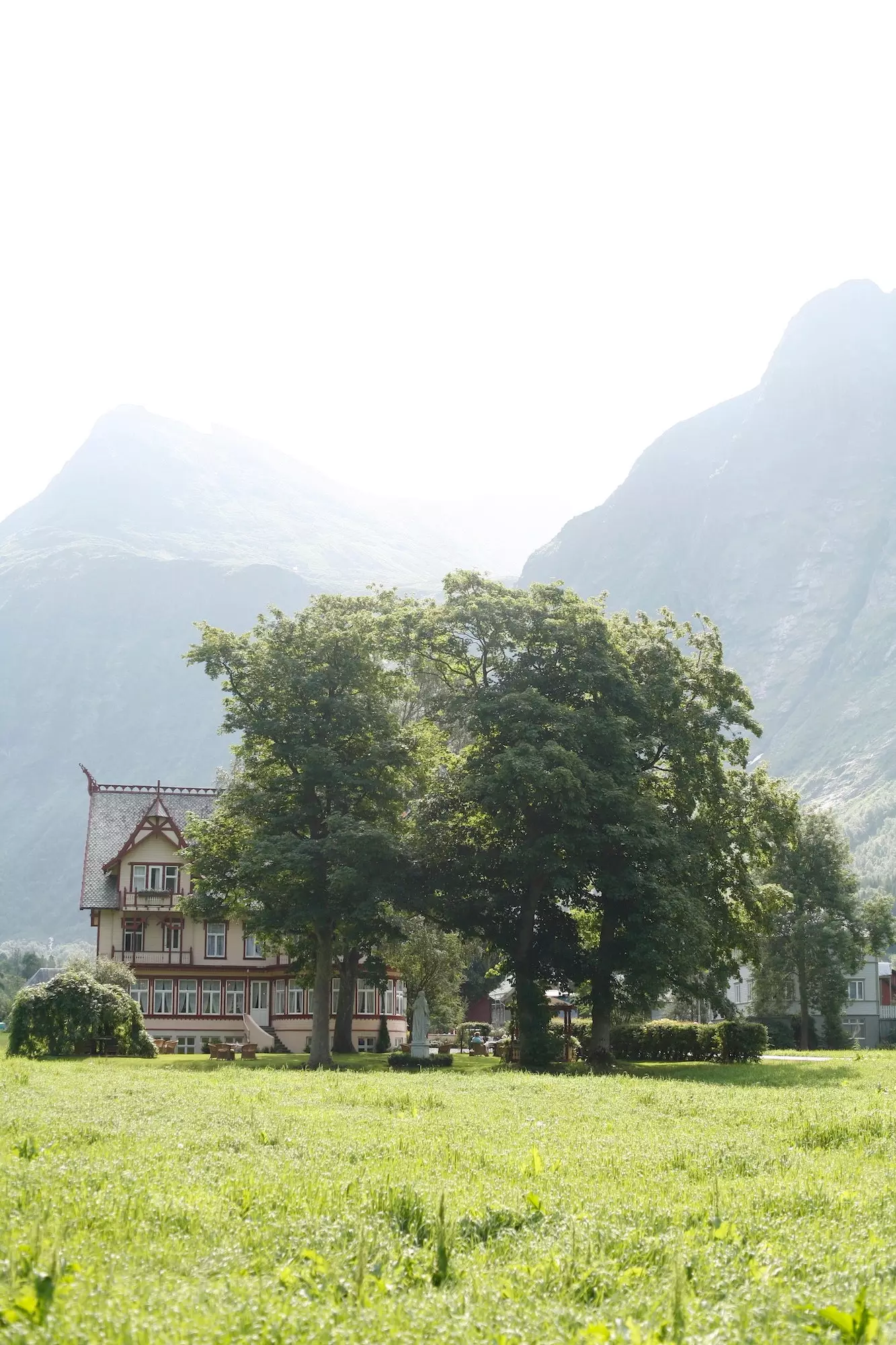
The romantic Union Øye hotel, in the alpine valleys of Sunnmøre and a short walk from Hjørundfjorden.
62˚ Nord also took over the Hotel Union Øye, an imposing chalet an hour's boat ride deep into a fjord, and renovated the Hotel Storfjord, named after the glacial waters next to which it is located.
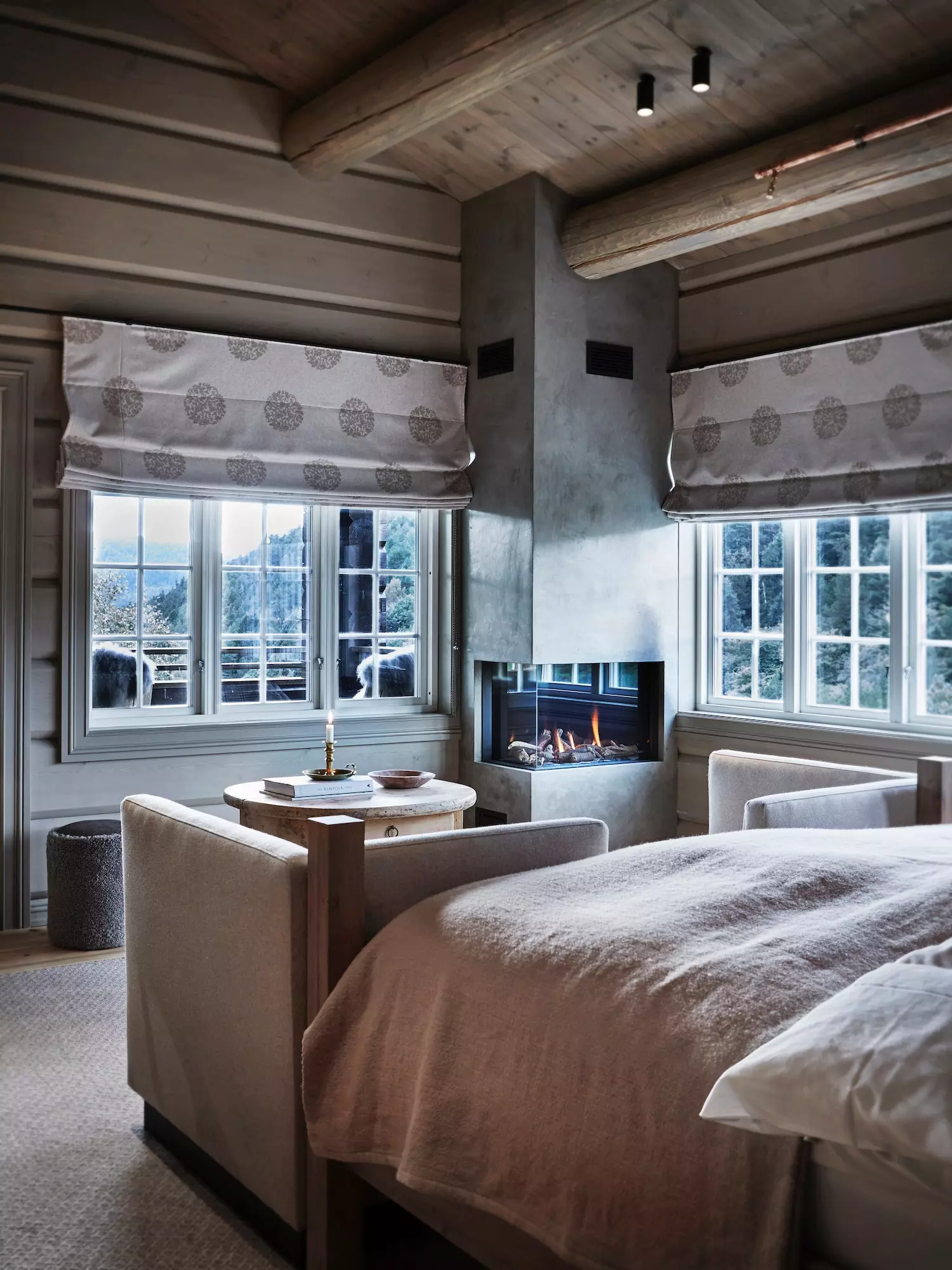
The suites at Hotel Storfjord in Glomset look out over the Storfjord and the Sunnmøre Alps.
Another of the group's properties, a three-bedroom cabin called the Owner's Cabin is a former weather lookout on remote Giske, an islet inhabited only by wading birds, seals and the occasional local music band that come to play in the small recording studio.
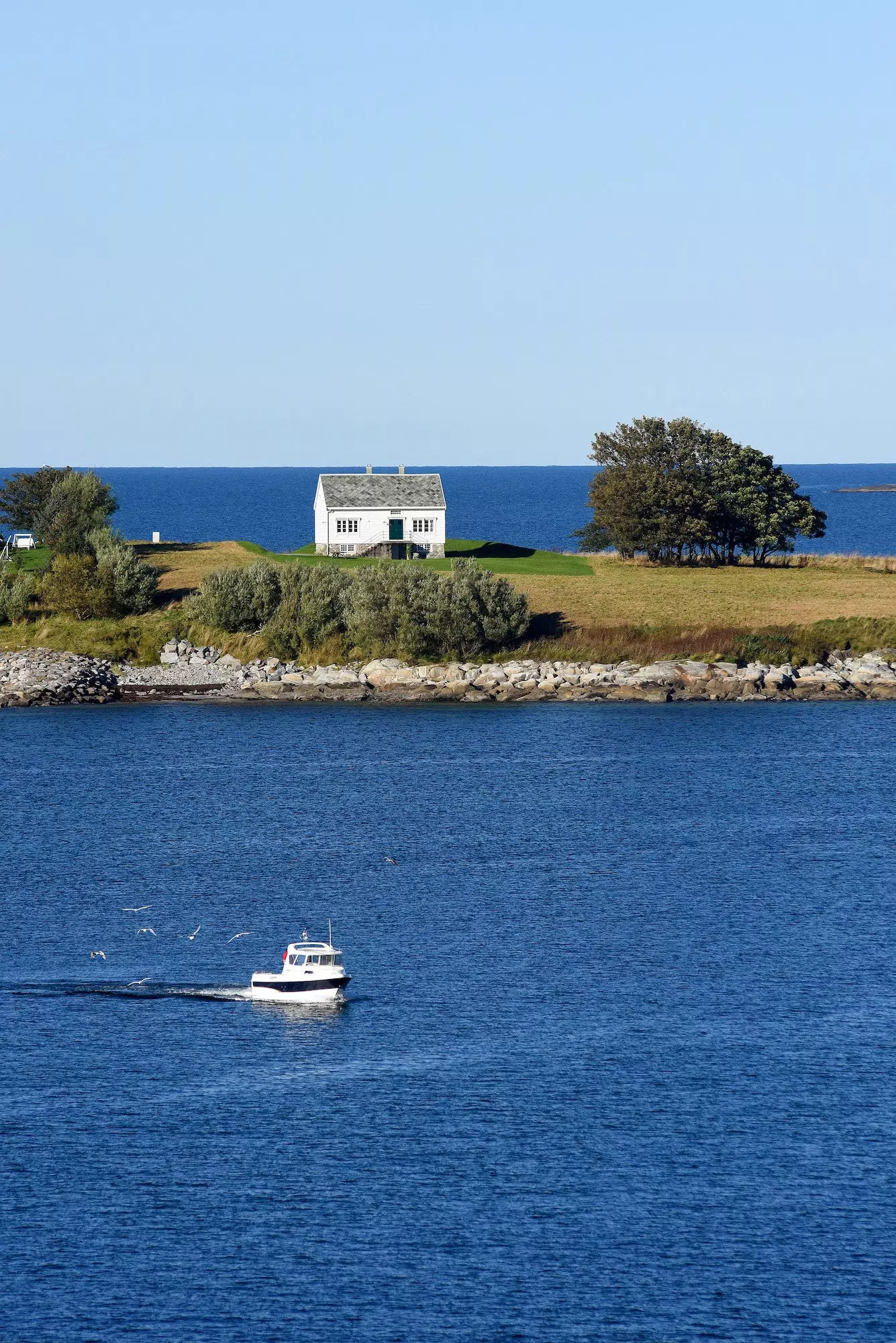
Owner's Cabin occupies the old weather lookout on the uninhabited islet of Giske.
And the original Devold factory is still a place where things are made. The Flakk family invited artists and artisans to occupy the space –a blacksmith who works with a 1920 forge, a potter, a glass blower and an illustrator– and shape a community creative hub.
Flakk's vision is inspired by the idea of geotourism, which aims to preserve the integrity of a destination by actively engaging the community, while protecting natural habitats. Instead of just parachuting over a location, travelers can really get under their skin. With 62˚ Nord, that can mean a “gastronomic safari” to an organic farm where you pick berries, herbs and mushrooms with their owners; kayak through the fjords visiting waterfalls and glaciers; either sail by inflatable boat to Runde, where the puffins arrive on the same day year after year, flying in such numbers that the air is covered in a maelstrom of orange webbed feet and feathers. “It has been a slow process, but in 2005 we already realized that there was no conflict between profit, society and the environment,” says Flakk.
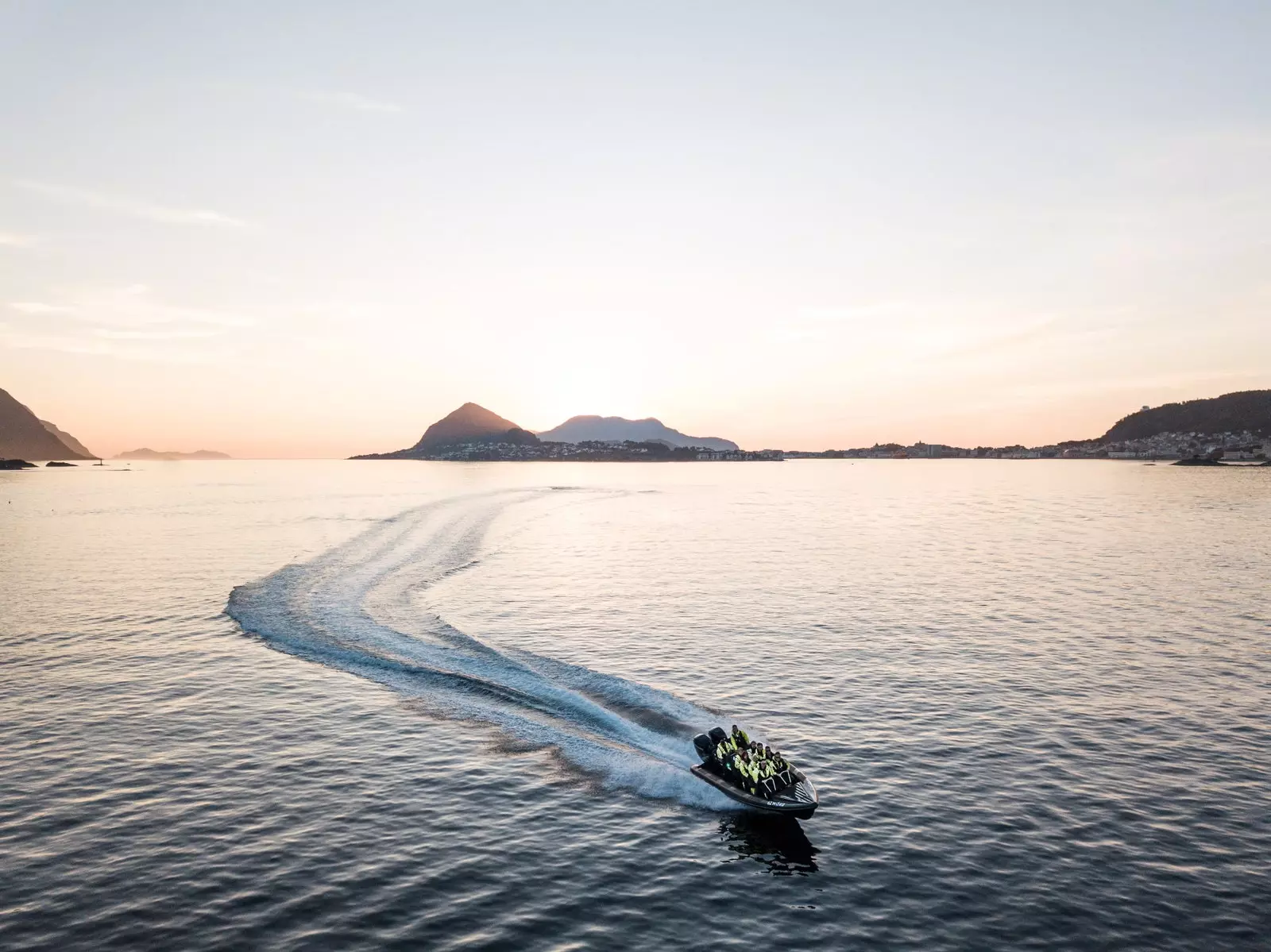
Boat trips through the fjords of Sunnmøre, one of the experiences of 62˚ Nord.
The issue of Norway and sustainability is contradictory . Almost half of the new cars in the country are electric, and Oslo has closed much of the city to vehicles, so residents, instead of driving, cycle, walk or take a tram.
The elephant in the room is the country's status as a leading oil nation. The huge reserves discovered in the late 1960s transformed the predominantly rural Norwegian economy. While the national power grid runs almost entirely on clean hydropower, the country also exports gas and oil and is looking for new deposits, though its giant $992 billion sovereign wealth fund is now focused on seed ethical investments such as the Green Climate Fund, that helps developing countries. "We were very lucky to be able to create that wealth," says Flakk, "but it is natural that we lead the development of sustainable energy. As for the export of oil... well, it affects the planet no matter who uses it."
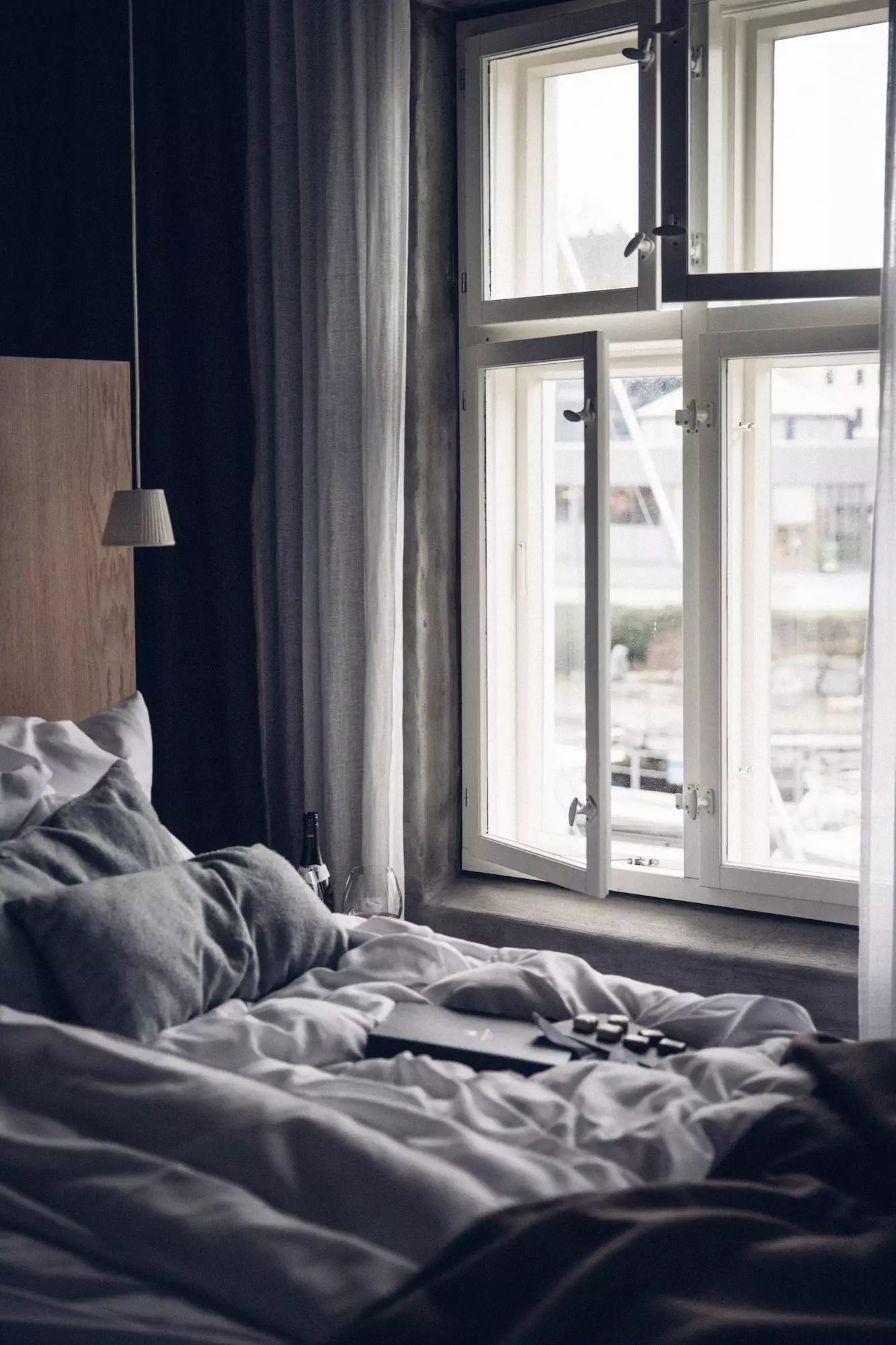
That's how cozy the rooms at the Brosundet hotel in the center of Ålesund are.
Flakk is also investing his resources to contribute to the ecological change of the country. His efforts have been focused on create a business collective to produce hydrogen. “Many people focus on reducing their footprint and use of plastics and being energy efficient, but I am more interested in being climate positive, with renewable sources. Hydrogen is a zero emission energy carrier that can be used for ships, trains and planes." His current goal is to make sure that, by 2023, all ferries crossing the UNESCO World Heritage Geirangerfjord will run on hydrogen fuel, as well as providing hydrogen refueling points for next-generation buses, trucks and trains.
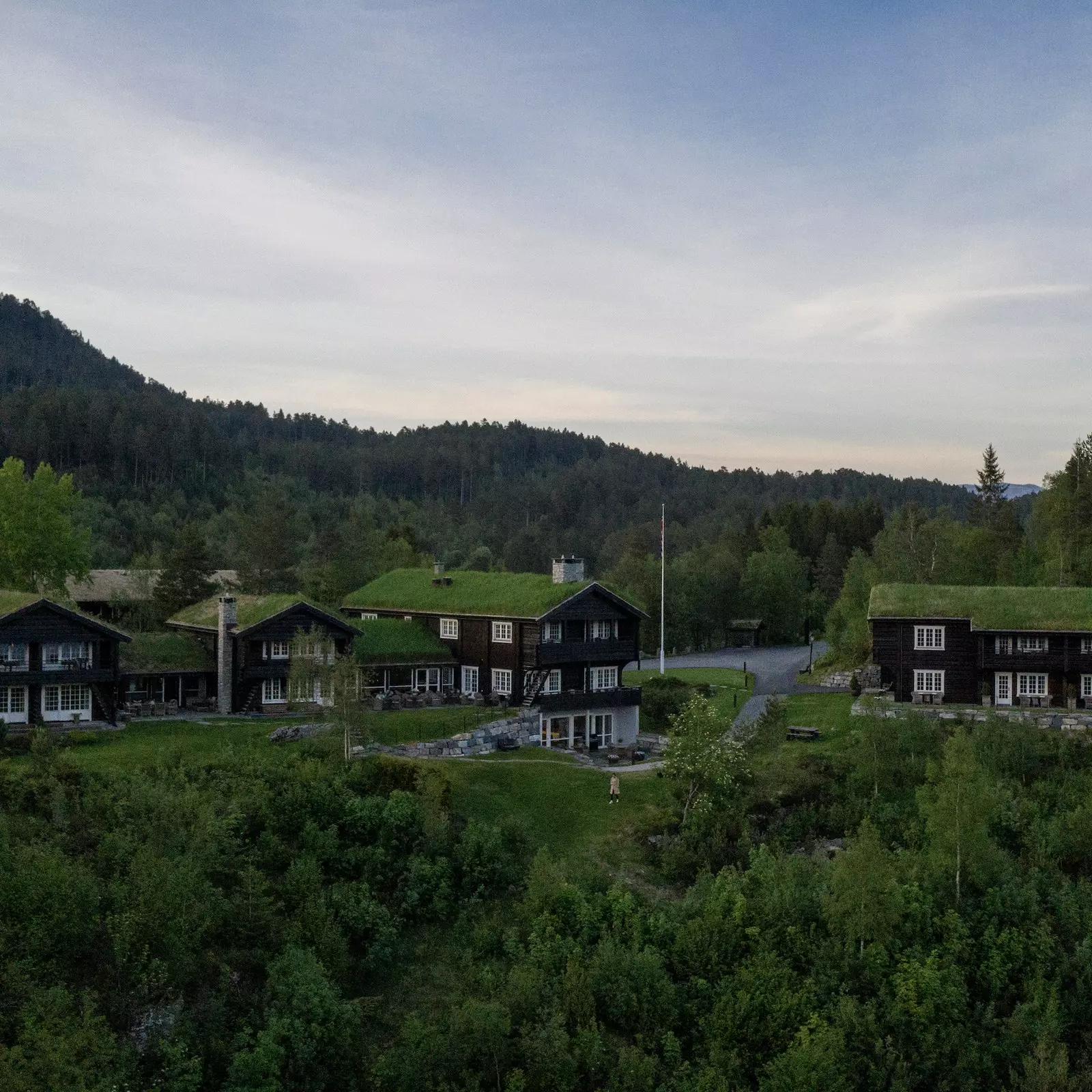
The Storfjord hotel is secluded with grass roofs.
The people of the region have begun to see the advantages of geotourism, says Flakk.
A handful of locals has opened its farms to a small number of guests. The town of Norangsfjord was in danger of becoming unsustainable, with no real industry or transport links, until 62˚ Nord took over the Hotel Union Øye, improving access and securing jobs. The characters behind the hotel group include Tom Tosse, from Ålesund, who commands a small fleet and tells the best fireside stories in town, Y Finn Kringstad , from Langevåg, who was the caretaker of the Devold factory for half a century and still comes over to water the pots.
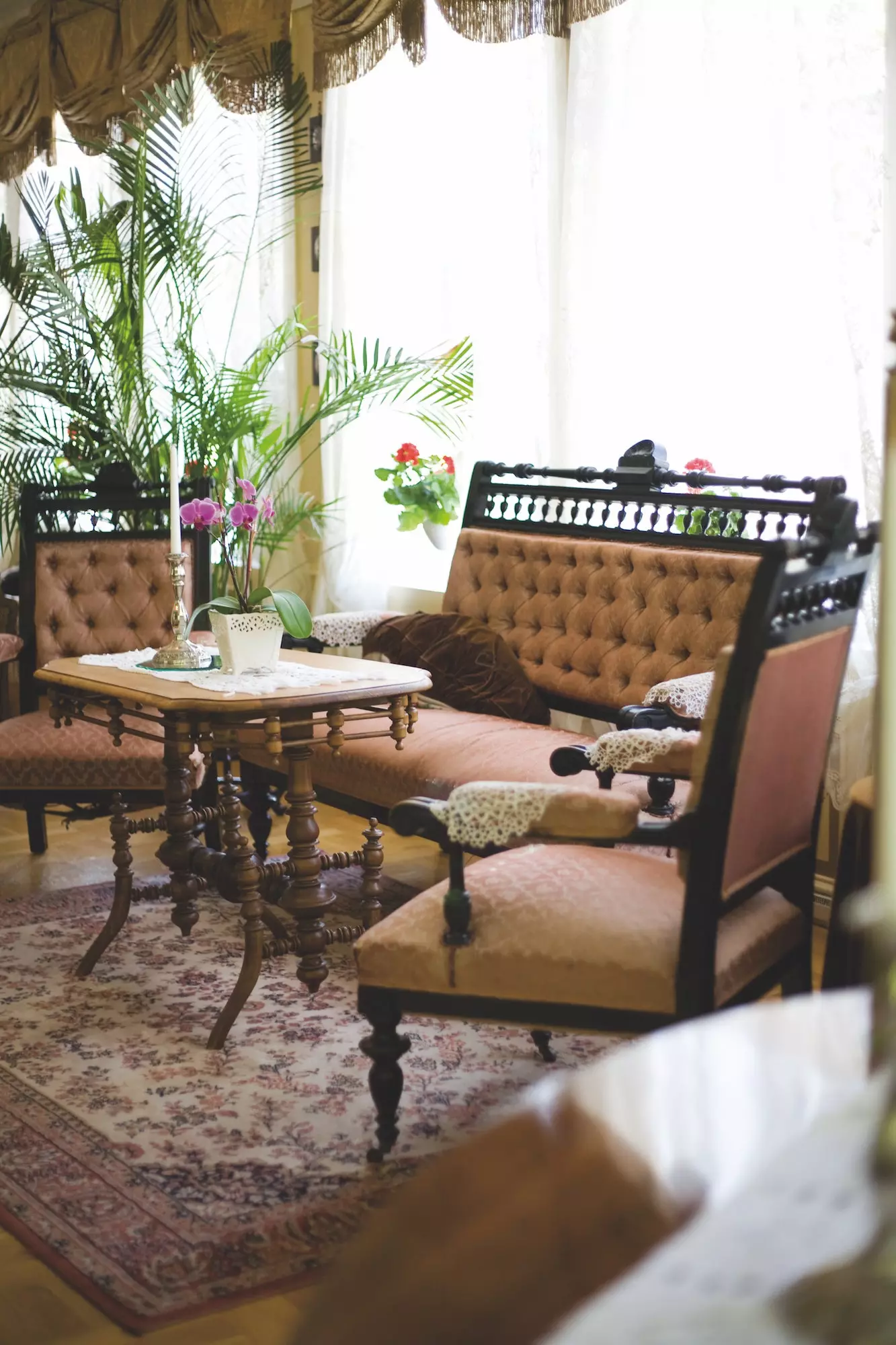
Opened in 1891, the Union Øye hotel hosted Karen Blixen, Sir Arthur Conan Doyle, Henrik Ibsen and Roald Amudsen.
“A lot of people my age are coming back to Ålesund from the big cities, bringing new ideas,” says Flakk's eldest daughter, Maria, 29 years old, who helps in the management of 62˚ Nord. "When it comes to traveling, there will always be instagrammers, but I think people of my generation are more interested in staying longer in one place and in appreciating the value of traditional ways of life.
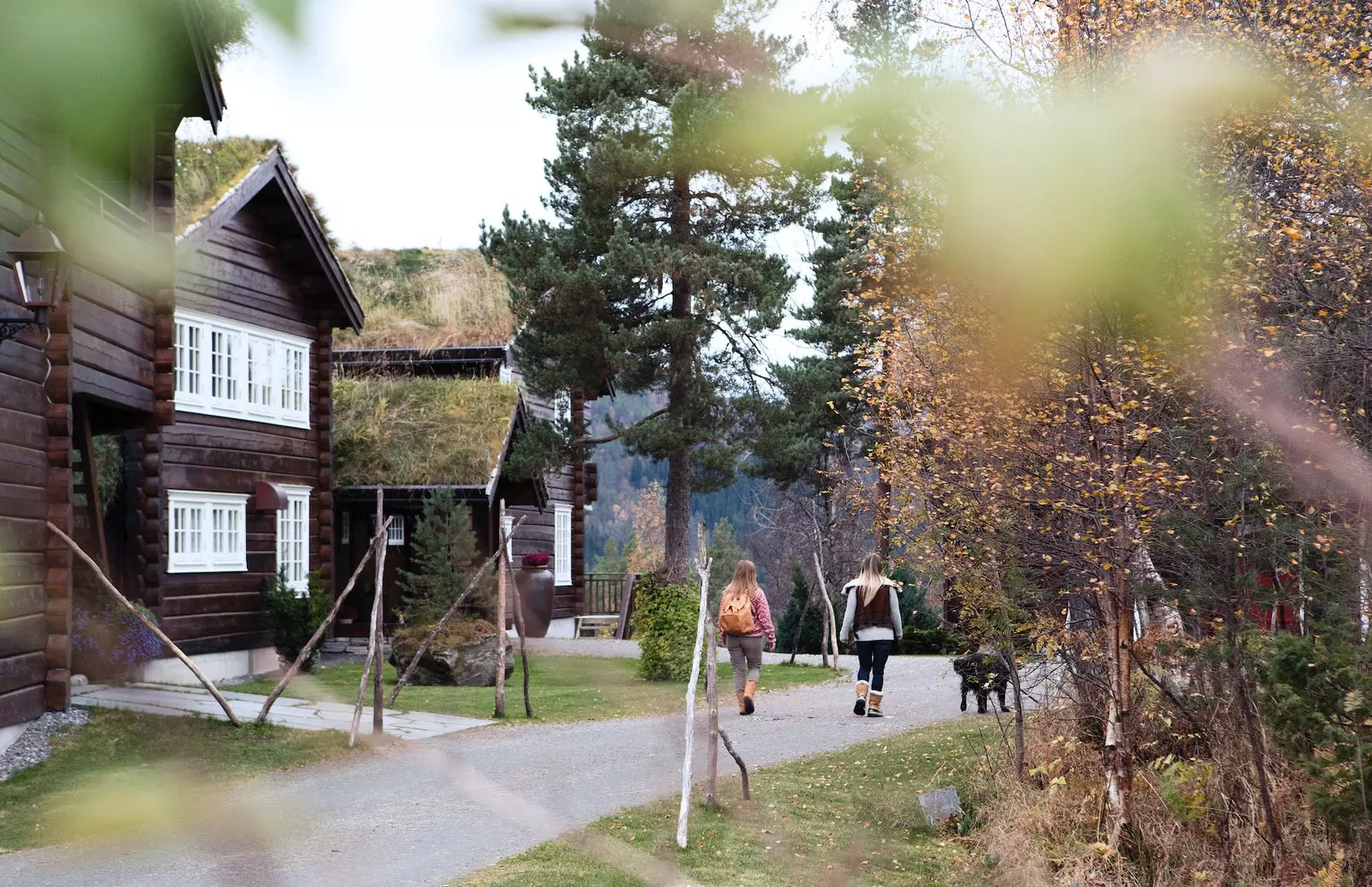
Many walks start from the Storfjord hotel.
This is the land of friluftsliv or respect for life outdoors , Y dugnad, community volunteering; of the Mountain Code ("Don't be ashamed to turn around") and the right to walk on any property Private as long as it is not urbanized.
As a child, Maria Flakk spent weekends in the cabin her parents built in the Sunnmøre Alps, and when she was in the Boy Scouts they went skiing at night, sleeping in snow caves they dug themselves. “When she was little, every Sunday we would go on a family walk or a cross-country ski trip, no matter what the weather was like,” Maria says. “Sometimes I hated it, but it instilled in me a very strong connection to life outdoors. There is a Norwegian saying, du angrer aldri på en tur: "you will never regret a walk". I love going to Giske Island, about a 15-minute drive from Ålesund. There the wind always blows. I go when the winter storms come I sit in the car with a hot coffee and watch. the famous site of alnes surfing It's right around the corner."
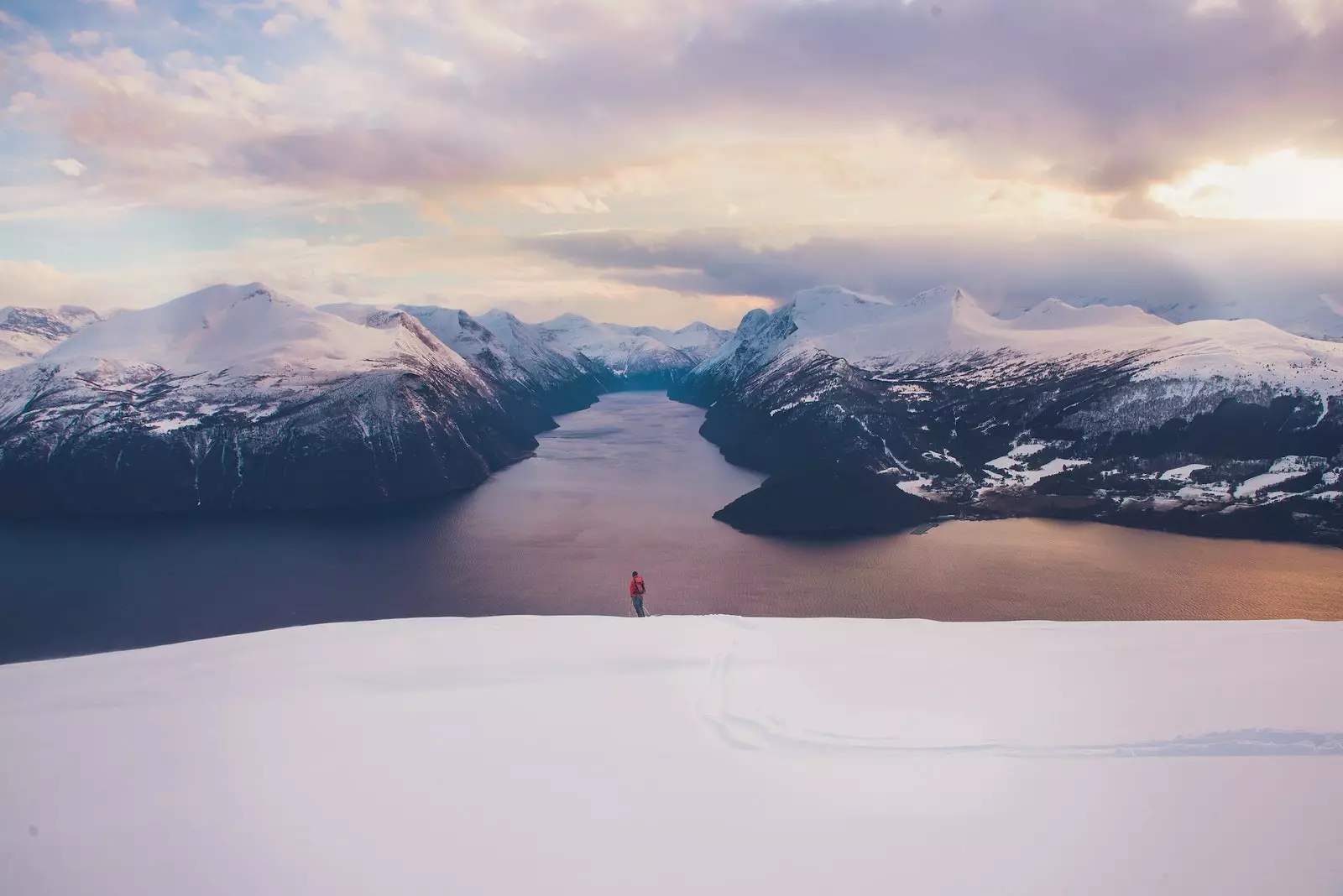
Skiing by the sea, next to the Geiranger Fjord, is an indescribable experience.
Another favorite of the Flakk family is the Storfjord hotel. Have a jetty to jump into the icy water of the fjord and hiking trails in all directions. Built by hand with logs from the forest, it has a grass roof over layers of birch bark to make it waterproof. inside there is blankets and more wool blankets, you travel carved farm tools during the long winter days and nights, trays and ladles, and a press that is used to mark patterns in butter.
The hotel's restaurant menu brings together a topographical selection of the forest and the mountain, with meat sourced from local farms and beer brewed in microbreweries. Chefs look for seaweed, wild garlic and birch sap. They make kombucha with raspberries and beets.
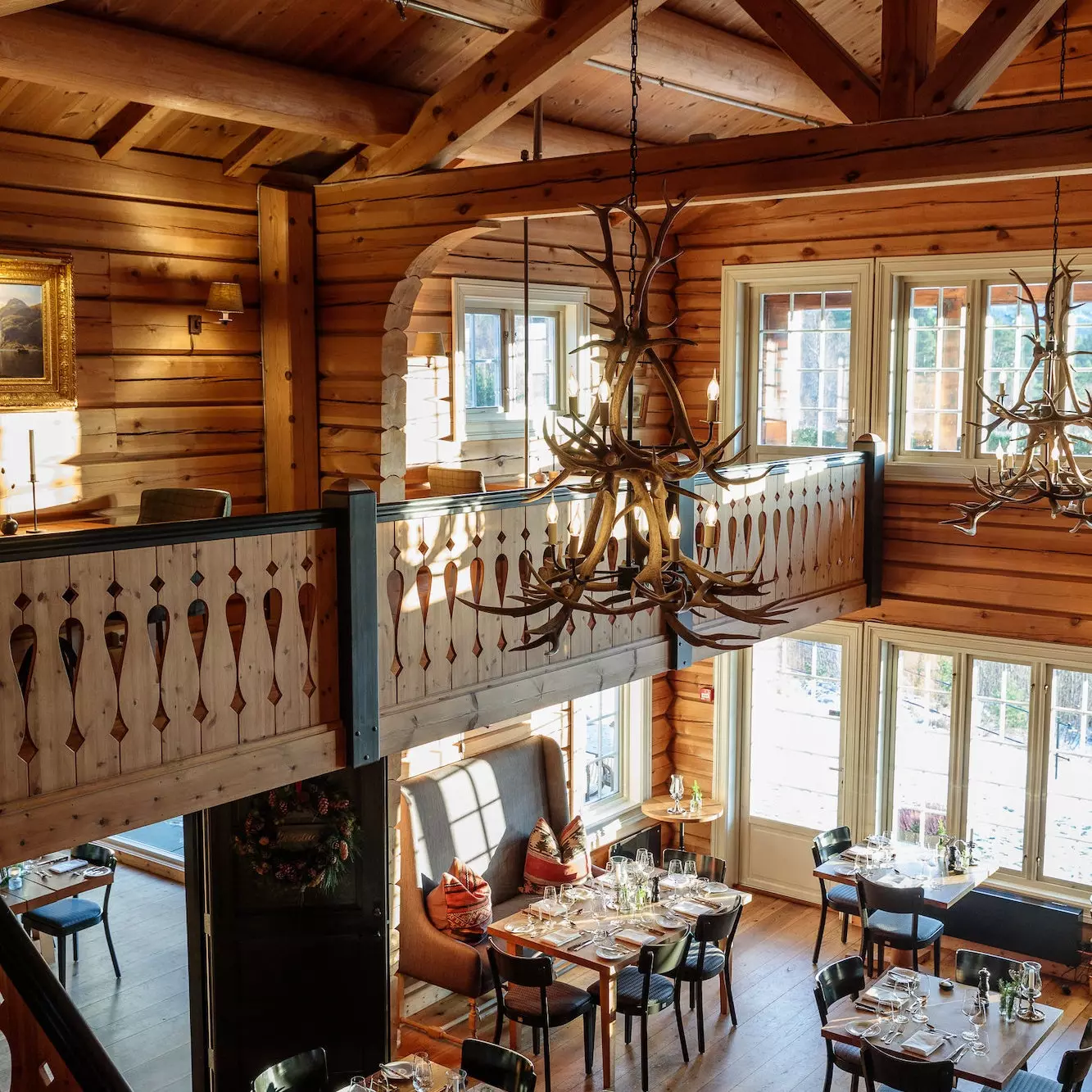
Storfjord Hotel Restaurant.
Here, walking in spring is exciting, along with waterfalls that foam when the snow and ice melt. "A state of calm is achieved," says María.
She talks about the weather –"everyone always talks about the weather"–, about how in winter people cross their fingers for the nordvesten, the northwest wind, that swirls the snow up to the mountains, and from the rimfrost, when your breath sparkles with crystals in the icy air. But the most evocative of all is blåtimen, the blue hour, that special moment after the sun goes down but before total darkness, a moment to watch the water in the fjord and the peaks disappear from view, a moment of calm at the end of the day.
62º Nord offers five-night trips from €10,089, full board. They include two nights at the Storfjord Hotel, two at the Union Øye Hotel and one at the Brosundet Hotel, as well as private kayaking, skiing, a helicopter ride and a boat ride. More details at www.62.no. Double rooms at the Hotel Brosundet from €145.
This article appeared in the March 2021 issue of Condé Nast Traveler United States.
